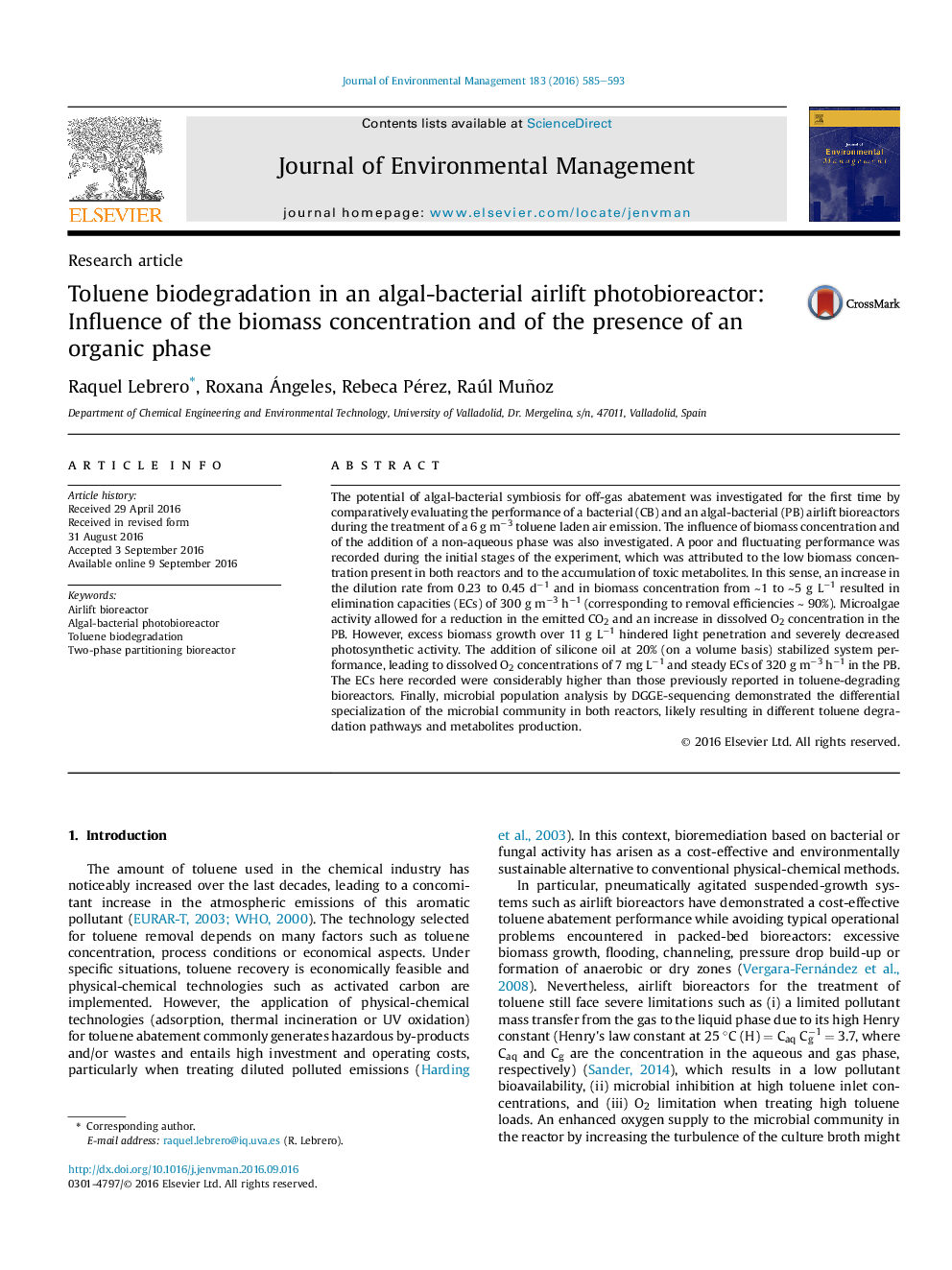| کد مقاله | کد نشریه | سال انتشار | مقاله انگلیسی | نسخه تمام متن |
|---|---|---|---|---|
| 5117193 | 1378118 | 2016 | 9 صفحه PDF | دانلود رایگان |
- Photosynthetic oxygenation was tested in a toluene removal algal-bacterial airlift.
- Toluene elimination capacities of 320 g mâ3 hâ1 were achieved.
- Optimum suspended solids of â¼5 g Lâ1 and dilution rates of 0.45 dâ1 were obtained.
- Silicone-oil enhanced toluene removal and O2 transfer, buffering toxic metabolites.
The potential of algal-bacterial symbiosis for off-gas abatement was investigated for the first time by comparatively evaluating the performance of a bacterial (CB) and an algal-bacterial (PB) airlift bioreactors during the treatment of a 6 g mâ3 toluene laden air emission. The influence of biomass concentration and of the addition of a non-aqueous phase was also investigated. A poor and fluctuating performance was recorded during the initial stages of the experiment, which was attributed to the low biomass concentration present in both reactors and to the accumulation of toxic metabolites. In this sense, an increase in the dilution rate from 0.23 to 0.45 dâ1 and in biomass concentration from â¼1 to â¼5 g Lâ1 resulted in elimination capacities (ECs) of 300 g mâ3 hâ1 (corresponding to removal efficiencies â¼Â 90%). Microalgae activity allowed for a reduction in the emitted CO2 and an increase in dissolved O2 concentration in the PB. However, excess biomass growth over 11 g Lâ1 hindered light penetration and severely decreased photosynthetic activity. The addition of silicone oil at 20% (on a volume basis) stabilized system performance, leading to dissolved O2 concentrations of 7 mg Lâ1 and steady ECs of 320 g mâ3 hâ1 in the PB. The ECs here recorded were considerably higher than those previously reported in toluene-degrading bioreactors. Finally, microbial population analysis by DGGE-sequencing demonstrated the differential specialization of the microbial community in both reactors, likely resulting in different toluene degradation pathways and metabolites production.
Journal: Journal of Environmental Management - Volume 183, Part 3, 1 December 2016, Pages 585-593
